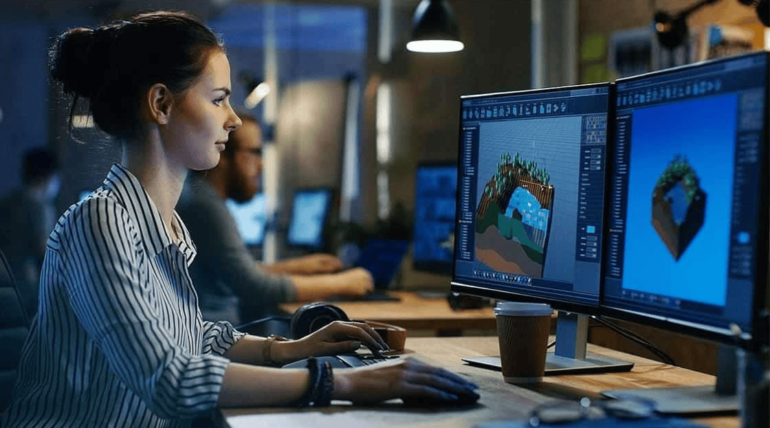
Promech EG / July 31, 2024
Mastering High–Tech Manufacturing Challenges with Virtual Build
Go from high-tech manufacturing hassle to digital twins! Ever wondered how to beat competitors without compromising on product cost and quality? Slow product development, high costs, and reduced quality are significant challenges for any business. After surveying 177 individuals about the effects of high-tech manufacturing, Dassault Systèmes discovered several key insights. Notably, there was a 36% decrease in prototypes and engineering change orders (ECOs). Additionally, there was an estimated 37% reduction in time to market. These findings highlight the significant impact of advanced manufacturing technologies on efficiency and productivity. Digital Transformation: More Than a Buzzword Digital transformation isn’t just a buzzword; it represents a profound change in how organizations operate and deliver value to their customers. Integrating digital technology into all areas of business is crucial for staying competitive and meeting evolving customer needs. This blog delves into high-tech manufacturing, addressing major challenges and offering insights on overcoming them with advanced technologies like virtual builds and digital twins. What is High-Tech Manufacturing? High-tech manufacturing, a dynamic segment within the manufacturing industry, specializes in products featuring advanced technologies such as circuit boards, semiconductors, fiber-optic cables, and capacitors. This sector also includes industries like Aerospace & Defense, Automotive, and Medical Equipment. Although rapidly developing, the high-tech manufacturing sector faces challenges that hinder progress and operational effectiveness. Therefore, it’s essential to explore the primary business obstacles faced by the high-tech industry and discover how transforming manufacturing technologies can help overcome them. Top Business Challenges in High-Tech Manufacturing 1. Increasing Physical Prototype Costs Increasing prototype costs are a significant concern in high-tech manufacturing. Engineers create prototypes to identify issues and explore development possibilities, enabling them to validate manufacturing processes early on. However, this approach may not uncover certain conditions or issues due to physical constraints. Additionally, significant time is required to adjust these initial models once specific problems are identified. Therefore, finding efficient solutions is crucial to optimizing both cost and time. 2. Lack of Information A lack of information poses significant challenges in high-tech manufacturing. Nearly 46% of individuals encounter issues due to the absence of design data. As a result, manufacturing engineers struggle to design accurately and efficiently, and validating production processes becomes difficult. Consequently, the risk of identifying issues in prototypes increases, leading to higher costs in manufacturing operations. This highlights the critical need for comprehensive design data to streamline processes and reduce expenses. 3. Non-Valuable Activities Manufacturing engineers waste 25% of their time on inefficient activities, such as duplicating and sourcing data, re-entering information, and consolidating shared assets. This inefficiency stems from the error-prone nature of traditional manufacturing systems. Consequently, these worthless activities hinder productivity and increase operational costs, highlighting the urgent need for modern, integrated solutions to streamline processes. Overcoming High-Tech Manufacturing Challenges with Virtual Build In the rapidly evolving field of technology, the concept of “digital twins” has become a game-changer for various industries. Essentially, a digital twin is a precise virtual replica of a physical system or object, meticulously designed to mimic its real-world counterpart in every way. This technology is renowned for its ability to enhance efficiency, predict maintenance needs, and revolutionize decision-making processes in sectors such as manufacturing, automotive, and oil & energy. High-tech manufacturers can examine new product ideas in a comprehensive 3D virtual environment by using the DELMIA software. Consequently, digital twins are transforming how these industries operate and innovate. Benefits and Advantages of Digital Twins- Cost and Time Savings
- Digital Validation of Prototypes
- Complete Testing of the Production Process
Curious about how virtual technology can revolutionize your business?
Check out our upcoming webinar
Categories: BlogTags: Best Digital Manufacturing Software Virtual build

